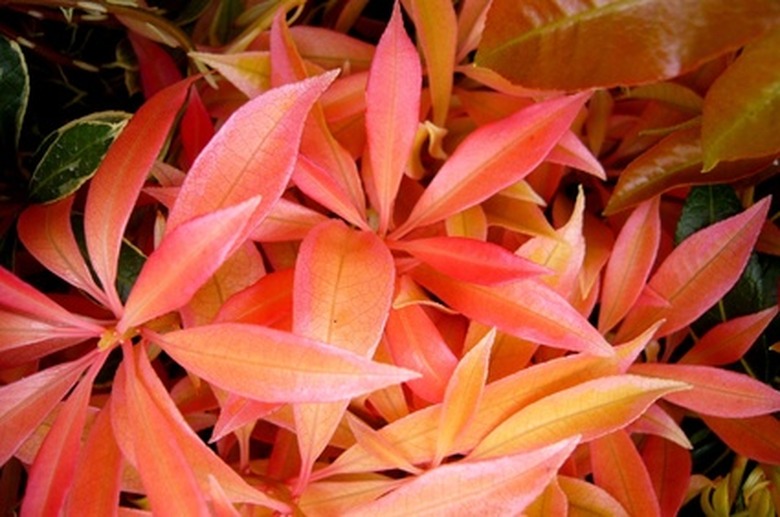Problems With Pieris Japonica
Commonly known as Japanese pieris, Japanese andromeda or lily-of-the-valley shrub, pieris japonica is a slow-growing, graceful, evergreen shrub hardy to zones 4 through 7. Characterized by 2- to 4-inch evergreen leaves that emerge bright red, pieris is prized for its pendulous white flowers. Clusters of buds form in late summer and remain through winter. After the early spring blooms fade, decorative seed pods remain until new buds form. Pieris japonica has special growing needs, the lack of which can lead to problems.
Cultural Problems
Pieris japonica needs acidic, moist but well-drained soil and protection from harsh winds and sun. High pH soils that lack organic material inhibit plant growth and cause the foliage to yellow. Extended periods of direct sun on a daily basis burn the leaf edges and invite insect pests that feed on them. Poorly-drained soils and over-watering prevent air exchange by the roots and cause fungal problems.
- Commonly known as Japanese pieris, Japanese andromeda or lily-of-the-valley shrub, pieris japonica is a slow-growing, graceful, evergreen shrub hardy to zones 4 through 7.
- Poorly-drained soils and over-watering prevent air exchange by the roots and cause fungal problems.
Diseases
The fungal disease Phytophthora attacks numerous water-logged garden shrubs. According to a Washington State University publication, plants with this fungus "appear unhealthy, with wilted or discolored leaves that may be stunted or drop prematurely. The fungus attacks the roots and progresses to the crown, eventually killing the plant." Plant the shrub crown slightly above ground level and amend poor soils with plenty of organic matter. Leaf spot diseases are also known to attack pieris, causing reddish-brown dead spots with gray centers. The fungus spreads by moving water, so avoid overhead irrigation when possible. Apply approved fungicides in severe cases per label instructions.
Insect Problems
Japanese pieris is a companion shrub to azaleas and is susceptible to similar insect infestations. Lace bugs suck juices from the undersides of leaves, causing the leaf tops to appear speckled and lacy. They are usually under control outside of dry, sunny areas. Spray insecticidal soaps or approved insecticides on the undersides of leaves to control large populations. In Northern areas, the black vine weevil is known to attack pieris. Keep mulch and dead leaves away from the base of the shrub, where the bugs live and lay eggs. Adults crawl up the plant and chew the edges of leaves at night. The larvae feed on roots and bark at the crown of the plant, eventually killing the shrub. Pick adult bugs from the plant at night while they feed, and apply insecticidal drenches or sprays per label instructions at dusk.
- The fungal disease Phytophthora attacks numerous water-logged garden shrubs.
- Pick adult bugs from the plant at night while they feed, and apply insecticidal drenches or sprays per label instructions at dusk.
References
- UT Gardens Shrub Index: Pieris japonica
- "Southern Living Garden Problem Solver"; John Alex Floyd, Jr., ed.; 1999
- Washington State University — Hortsense: Pieris
